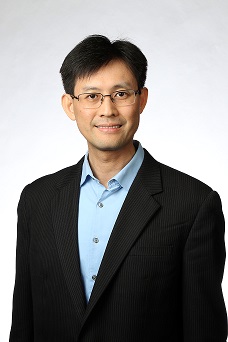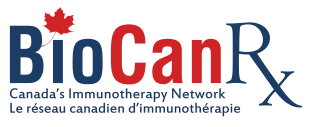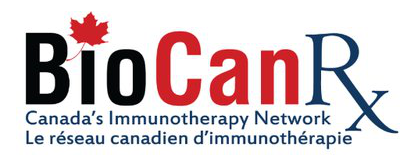By Heather Blumenthal
 Clinical trials – especially the double-blind, randomized sort – are considered the gold standard in the development of new treatments and therapies, and for good reason. They provide the data on safety and efficacy that enable these treatments to take the final jump to actual use in the clinic.
Clinical trials – especially the double-blind, randomized sort – are considered the gold standard in the development of new treatments and therapies, and for good reason. They provide the data on safety and efficacy that enable these treatments to take the final jump to actual use in the clinic.
But what happens after that? That’s what Kelvin Chan wants to know.
Clinical trials are carefully controlled affairs. Only a selected subset of patients can participate, who meet strict inclusion criteria. Importantly, these patients generally don’t have any co-morbidities that could complicate results. As well, participants are carefully followed and monitored to ensure that they comply with all the conditions of the trial. In essence, clinical trials provide “perfect world” data.
In the real world, though, things are different. All sorts of patients will receive the treatments, many of them with more complicated health problems that may affect how they respond to treatment. And to a large extent, they will receive much less monitoring and support while they take that treatment. That can change outcomes – but how?
To complicate things even more, many new treatments, especially in the cancer arena, are incredibly costly. Health regulators make decisions about what to fund based on clinical trial data. But if real-world use of the treatment produces different results, how does that – or should that – affect funding decisions?
Dr. Chan, a medical oncologist and associate scientist at the Odette Cancer Centre at Toronto’s Sunnybrook Health Sciences Centre, uses the term “real world” a lot. He is the recipient of a Clinical, Social and Economic Impacts (CSEI) grant from BioCanRx to look specifically at two kinds of cancer therapies – the use of a biosimilar, bevacizumab, to treat advanced colorectal cancer, and CAR-T cell therapy to treat leukemia in children and lymphoma in adults – to see how they behave in the real world.
“Sometimes, clinical trials focus on short term outcomes and highly selected populations,” says Dr. Chan. “Their findings may not fully represent the unselected patient population whom we care for in our routine practice.”
Biosimilars are of particular interest because of their cost – if they prove to have the same outcomes as the significantly more expensive biologic products they can replace, they have the potential to save large amounts of money for health-care systems while producing equally good outcomes.
CAR-T therapy, on the other hand, is hugely expensive, largely because of its personalized nature; immune cells from each patient have to be individually manipulated in the lab. Evidence of its real-world effectiveness is needed to justify the large sums it requires.
So how to get this real-world evidence? Well, in Ontario, or all of Canada for that matter, it’s much easier than in many other places, largely because our publicly funded health-care system means that large patient and administrative data sets are available to conduct the kind of research Dr. Chan is undertaking.
On a patient level, Dr. Chan will be following patients from their initial enrollment to ascertain things like survival rates and side effects. He’ll be looking for outcomes like return to hospital after treatment and patients going to the emergency department that can drive up costs. He will also be looking at patients’ baseline characteristics to learn more about who is receiving these treatments and whether factors like co-morbidities influence outcomes.
“We’re trying to look at what happens to patients down the road,” he says.
On a system level, Dr. Chan will also be looking at resource utilization – at costs, and at what factors drive up costs, or help bring them down. Successful treatment, for instance, can bring down overall costs because further treatments are not needed. Unsuccessful treatment, or treatment with significant side effects can drive up costs.
“What is the value for money?” Dr. Chan is asking. “Is it as expected? Better? Worse?”
But health technology assessment – the “official” name for what Dr. Chan is doing – is just one part of the puzzle. Knowledge translation is the other essential part – how to make sure that the knowledge generated through his research is actually put into practice, to support often-difficult decisions about what should be covered in our public health-care system and for whom.
“After publications, presentations, then what?” he asks. “I want to do something better for patients in Ontario.”
That is why he has involved knowledge users – health-care decision makers and policy makers – in the study from the outset. One of his co-PIs, for instance, is Scott Gavura, the director of the Provincial Drug Reimbursement Programs for Cancer Care Ontario.
“Understanding the real-world clinical and economic outcomes of CAR T-cell therapy will support long-term funding sustainability, and the evaluation of future indications for the therapies,” said Mr. Gavura. “Similarly, evaluating biosimilars after they are implemented, and confirming that they are effective, will build patient and provider confidence in these types of biologics.”
“I want to promote the sustainability of the cancer drug program,” says Dr. Chan. “If we don’t monitor, we won’t know the effects in the real world.”
And knowing more will help to ensure the best evidence-based care for people with cancer.
Heather Blumenthal has been writing about health and health research for more than 20 years and never loses her fascination with the advances Canadian researchers are making.

